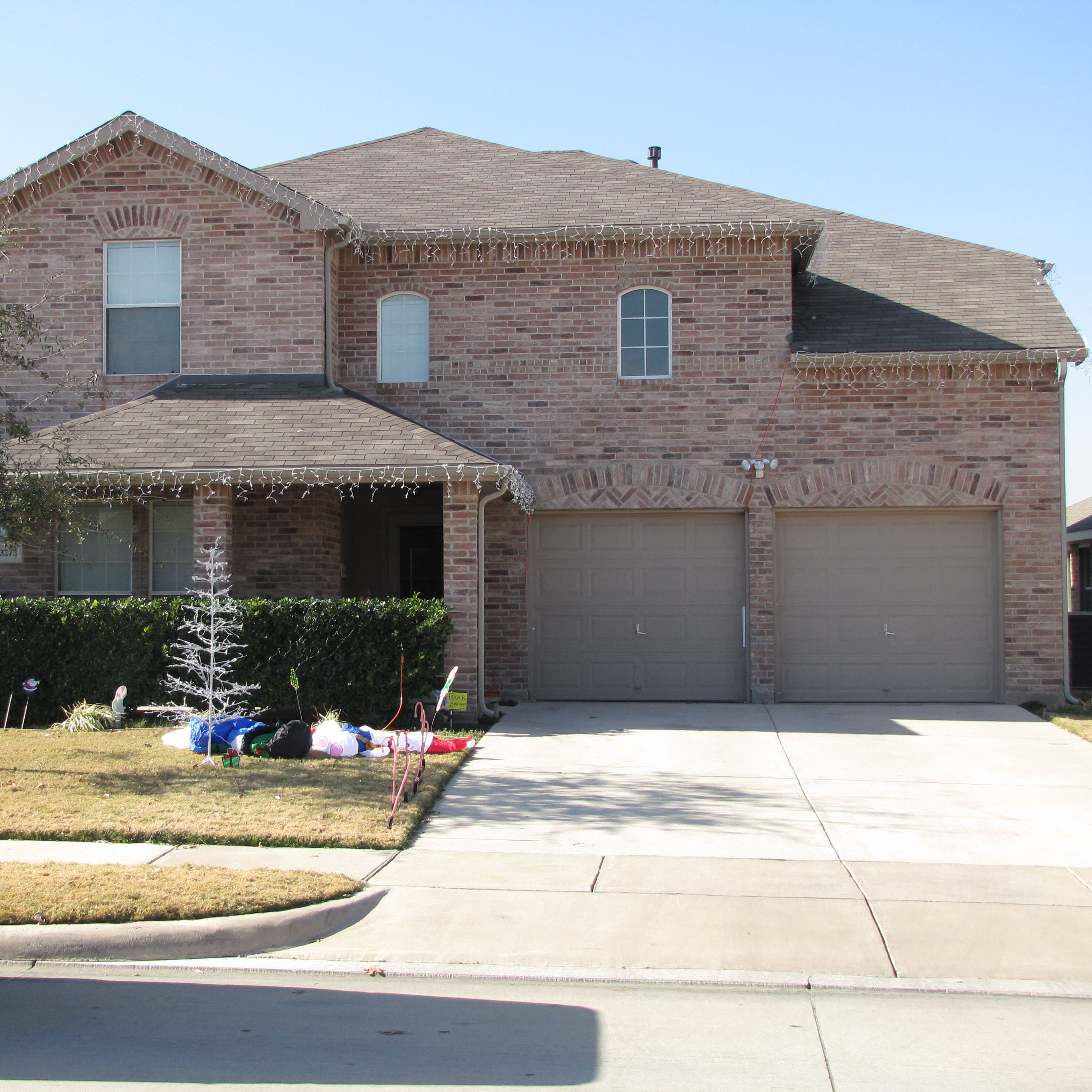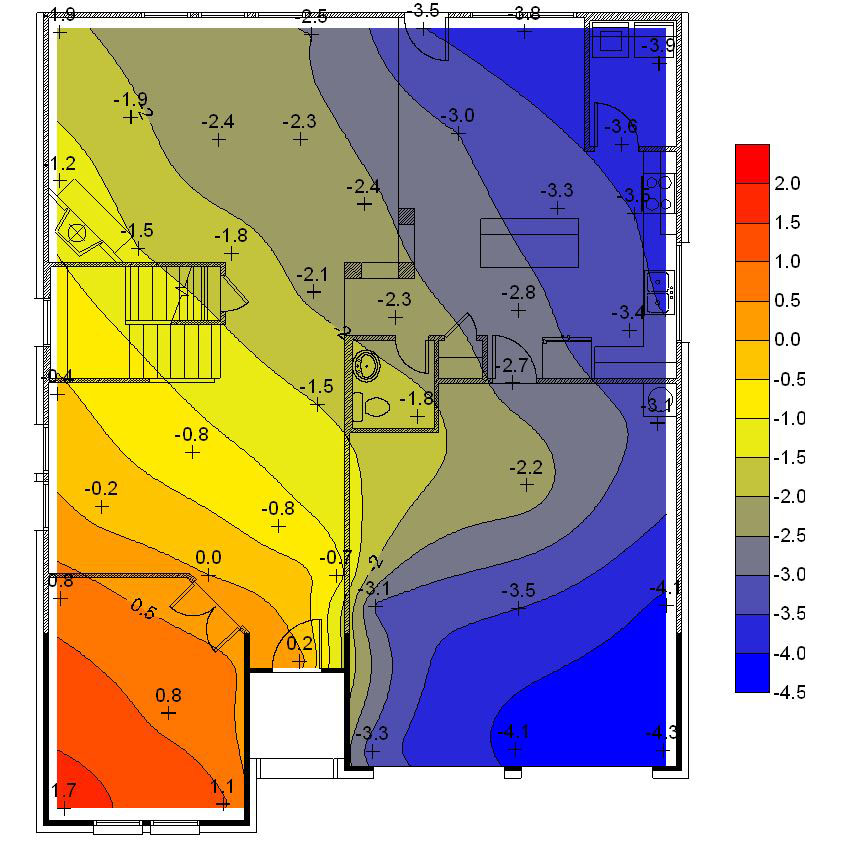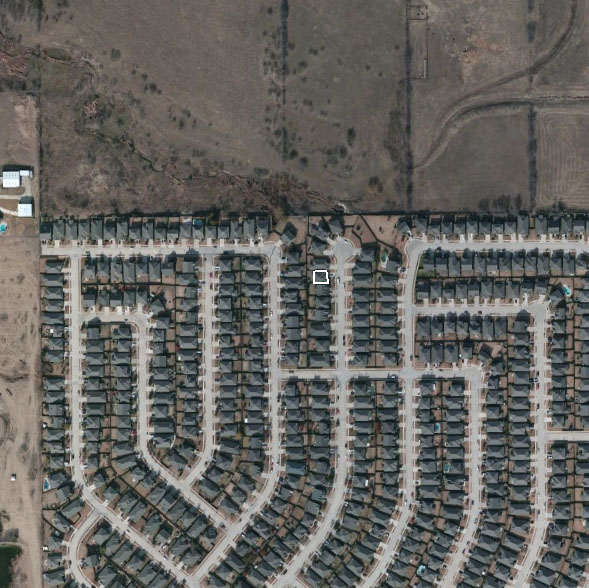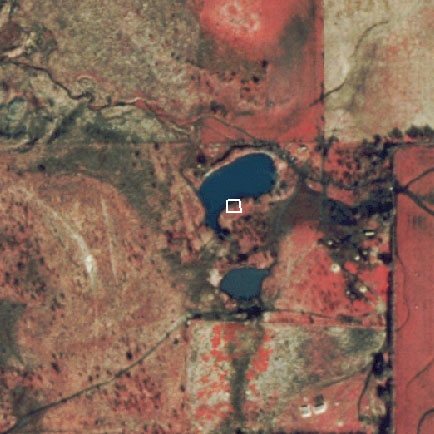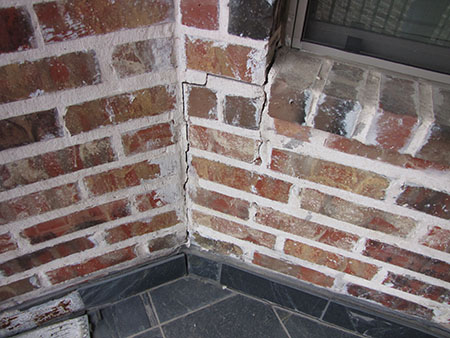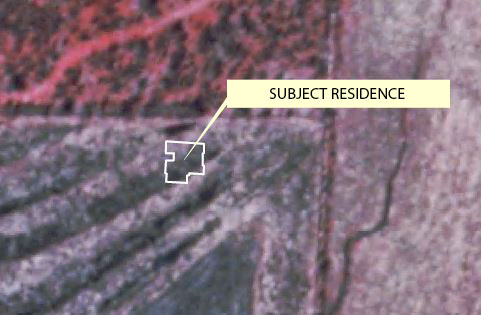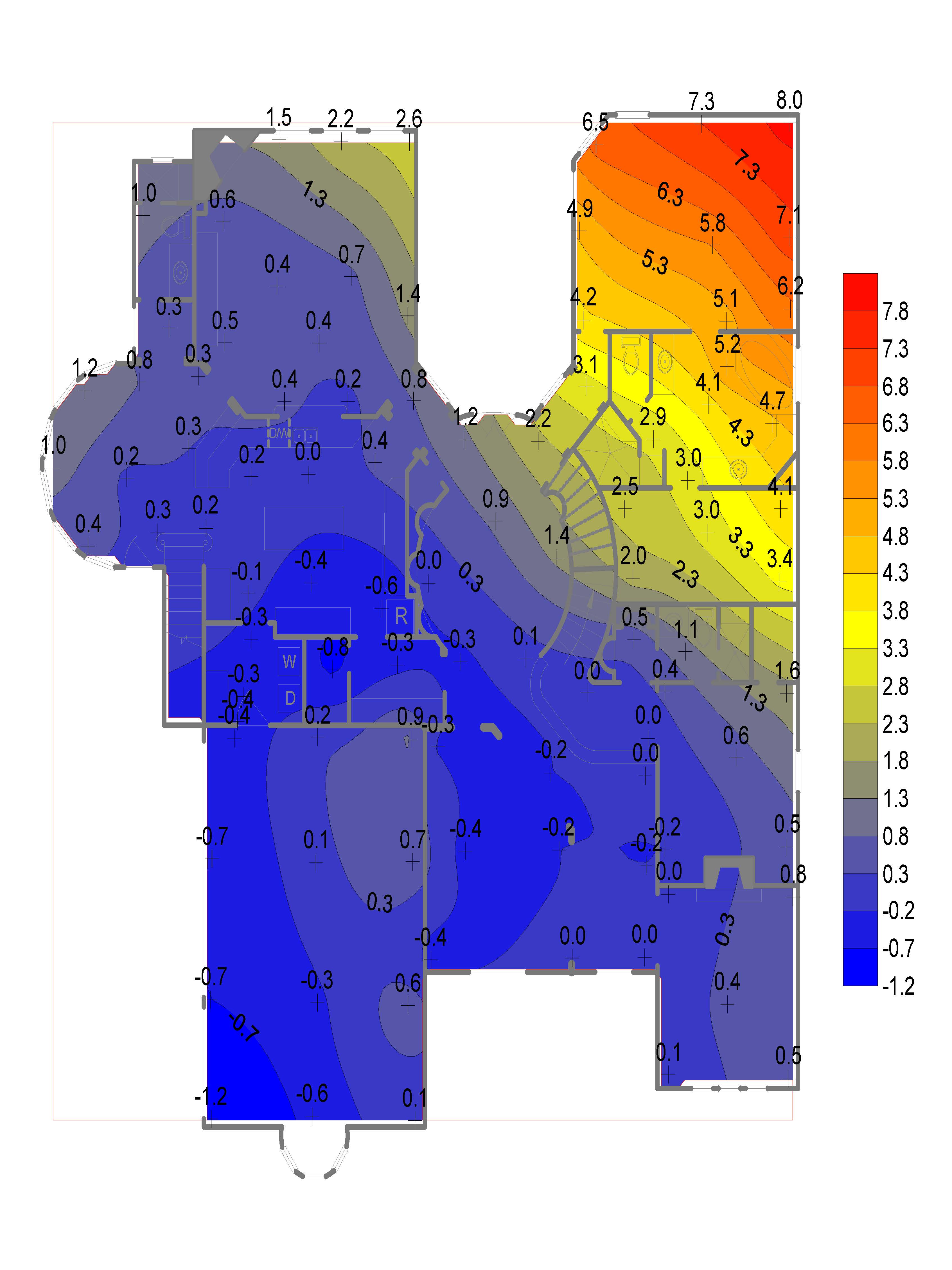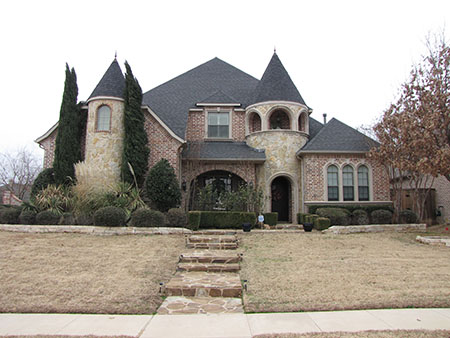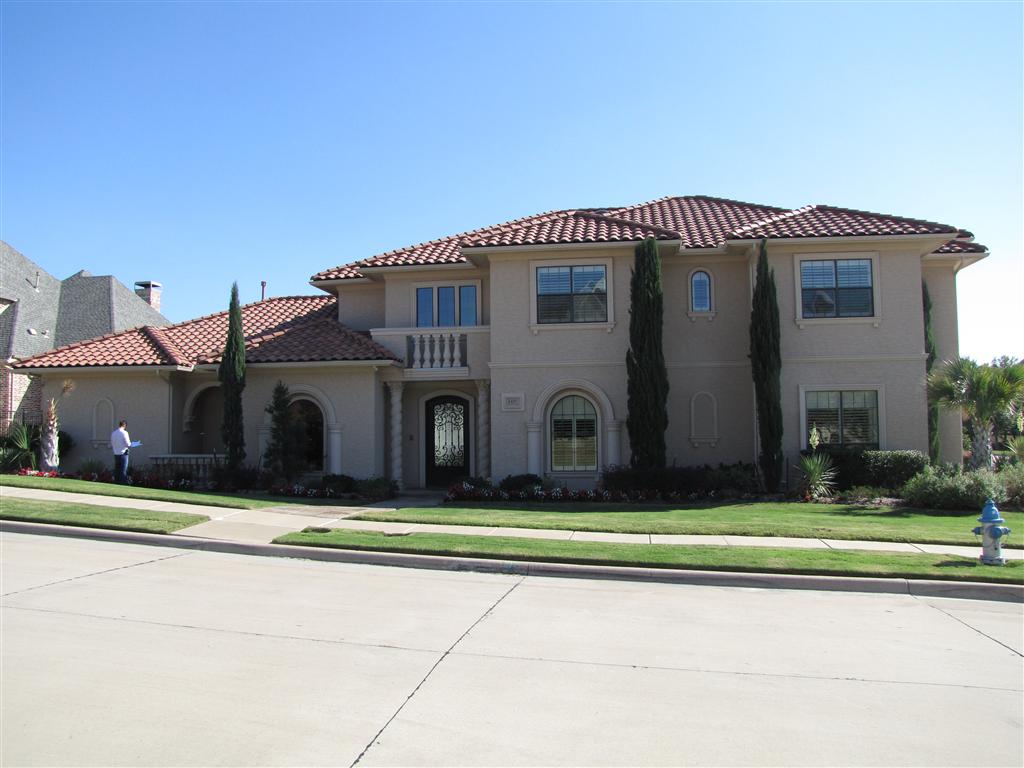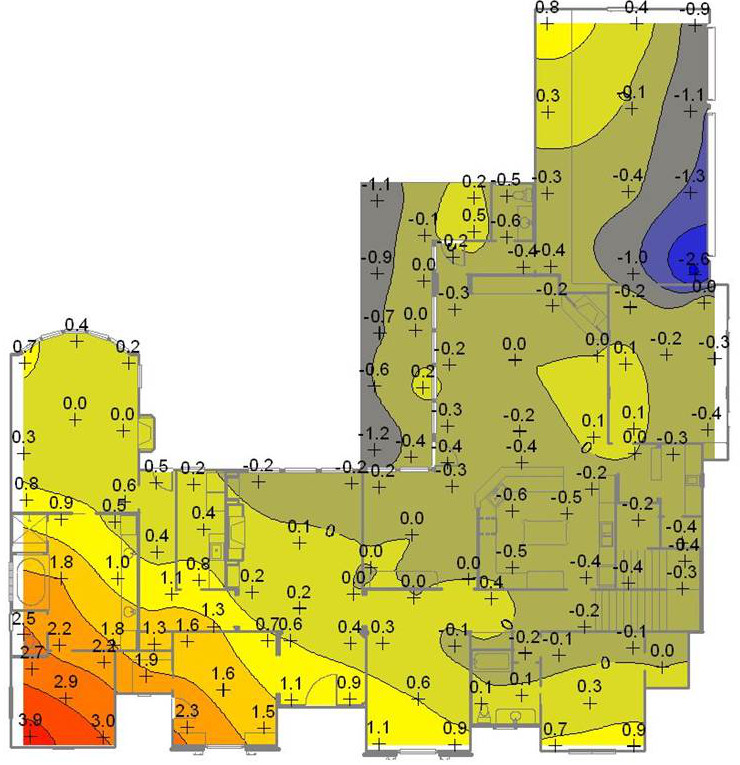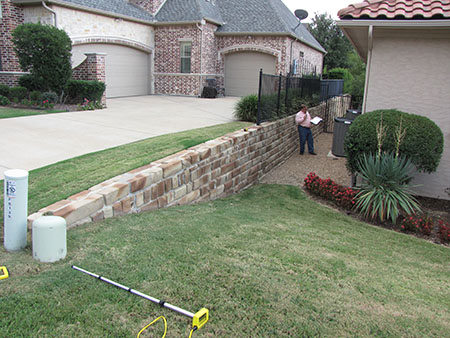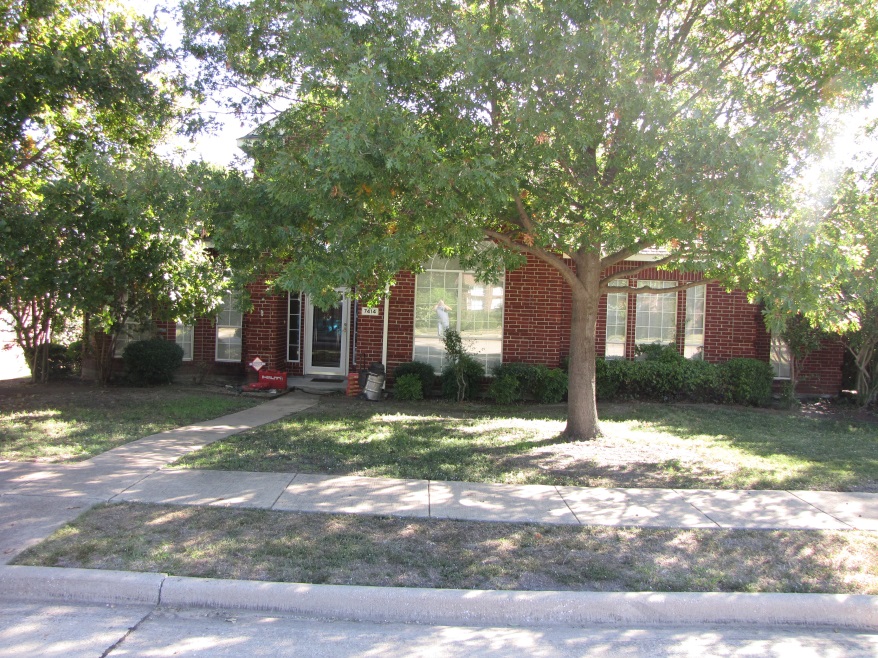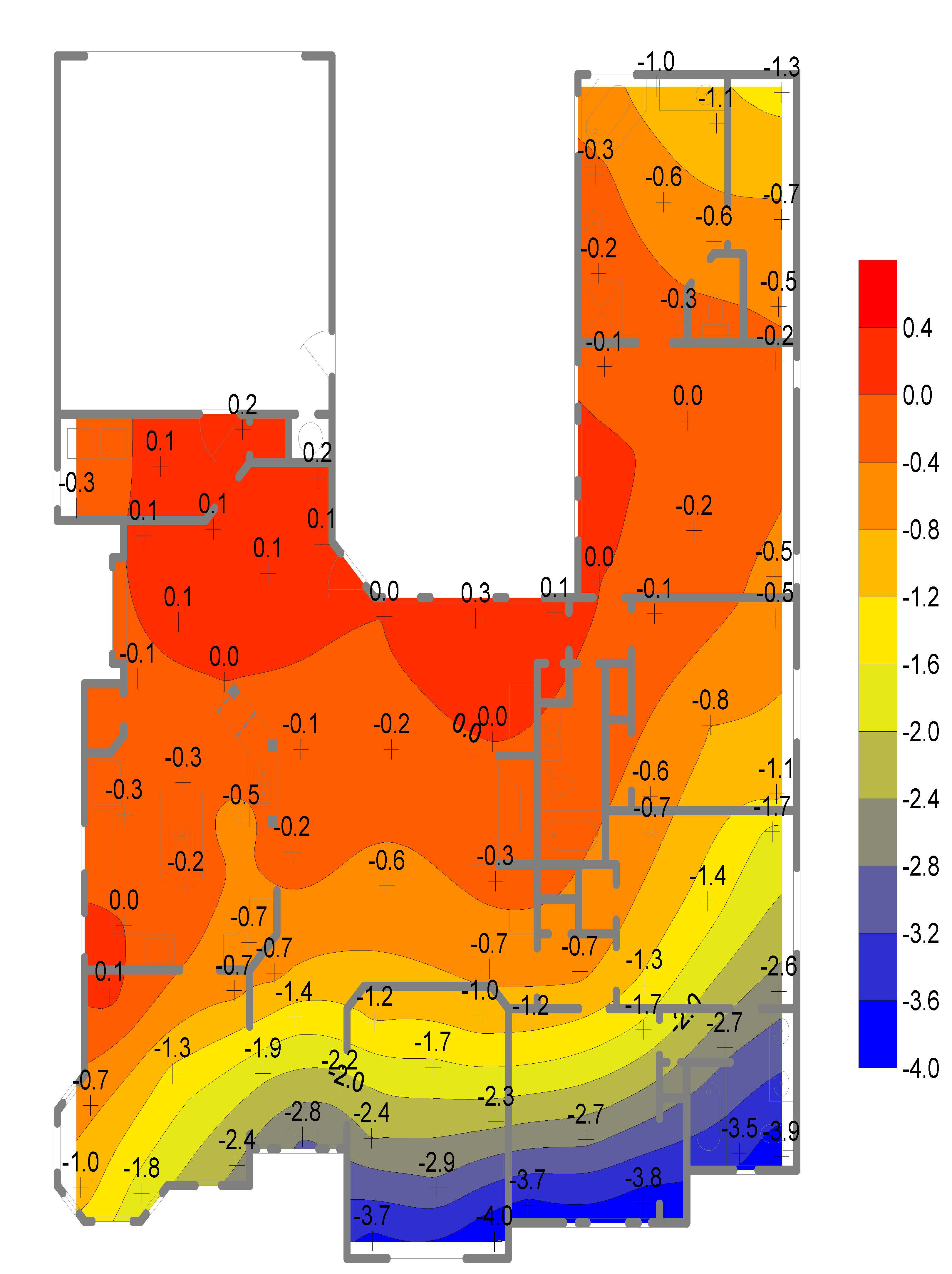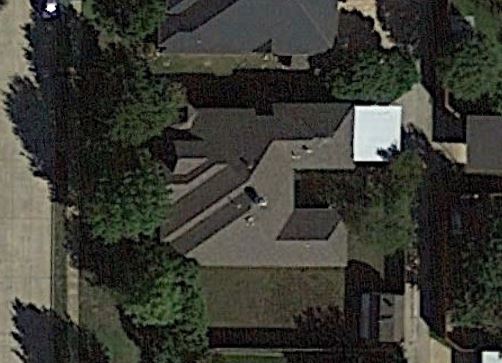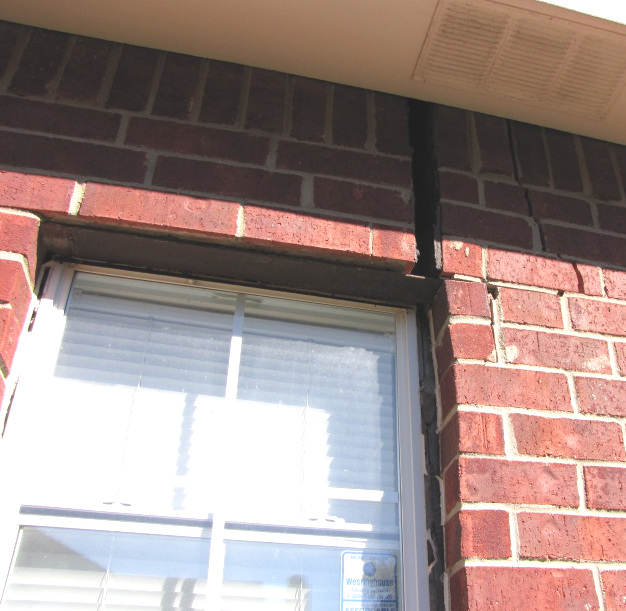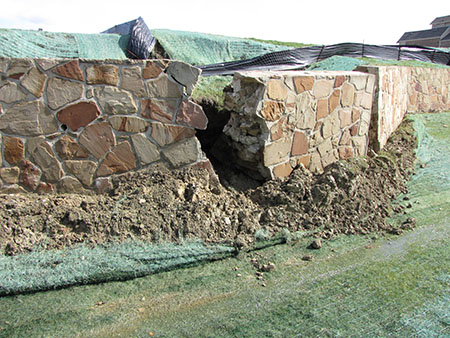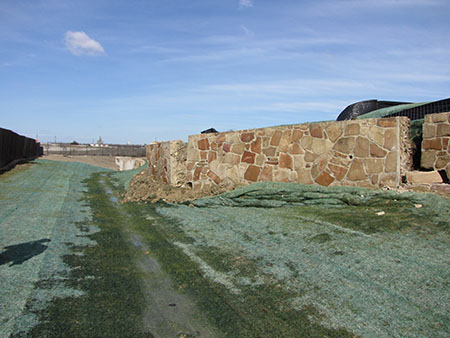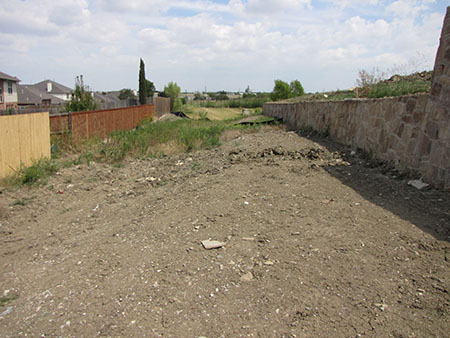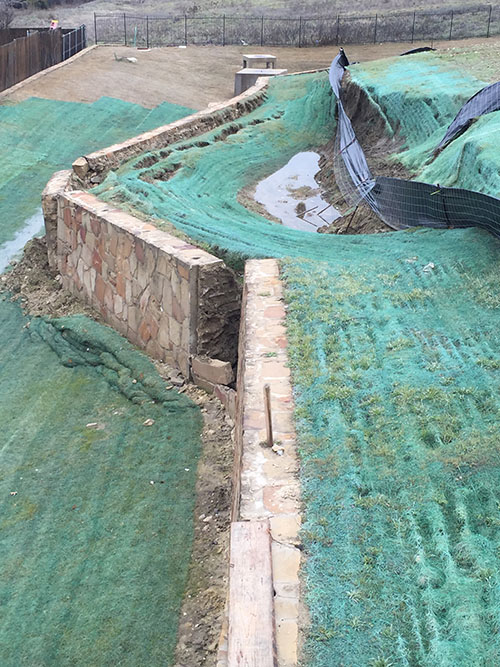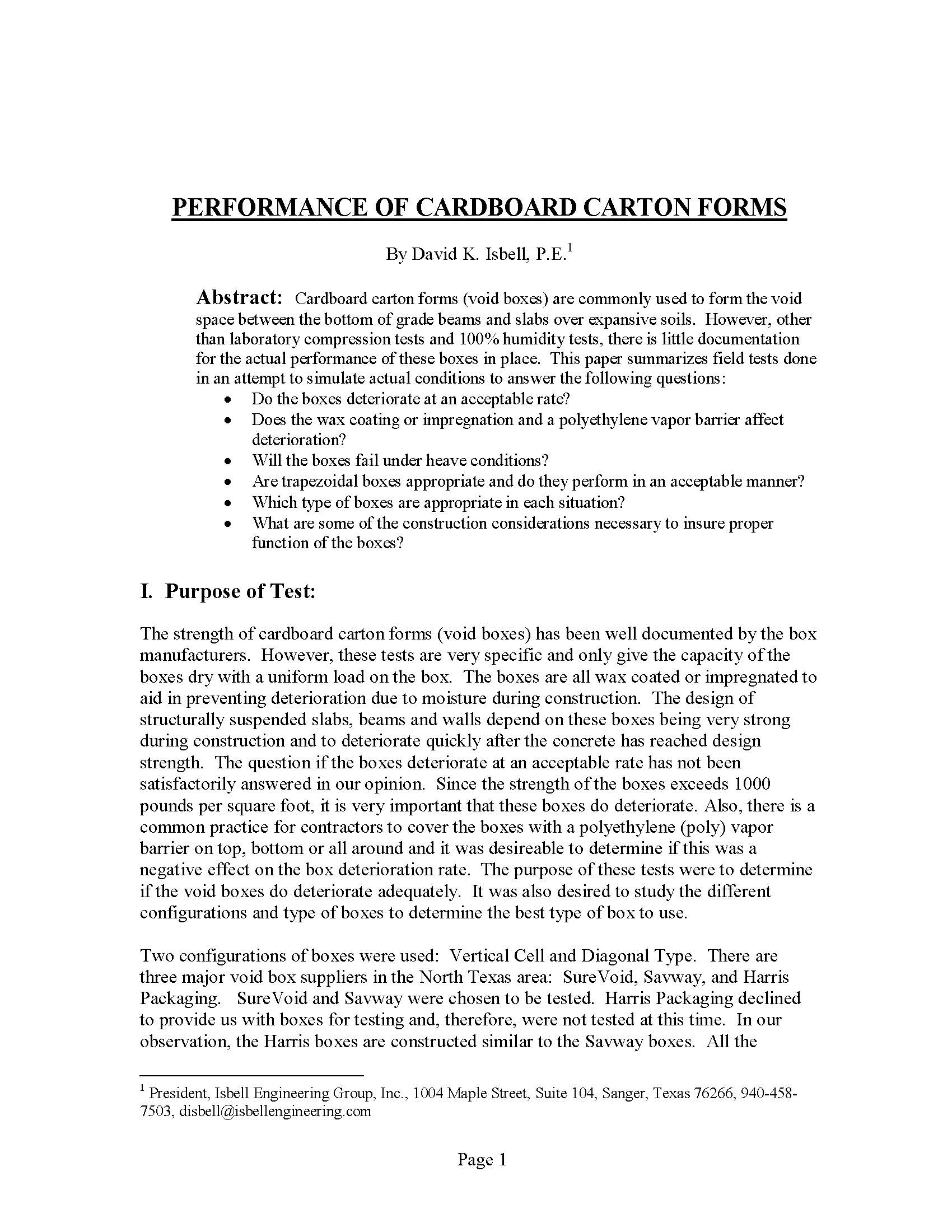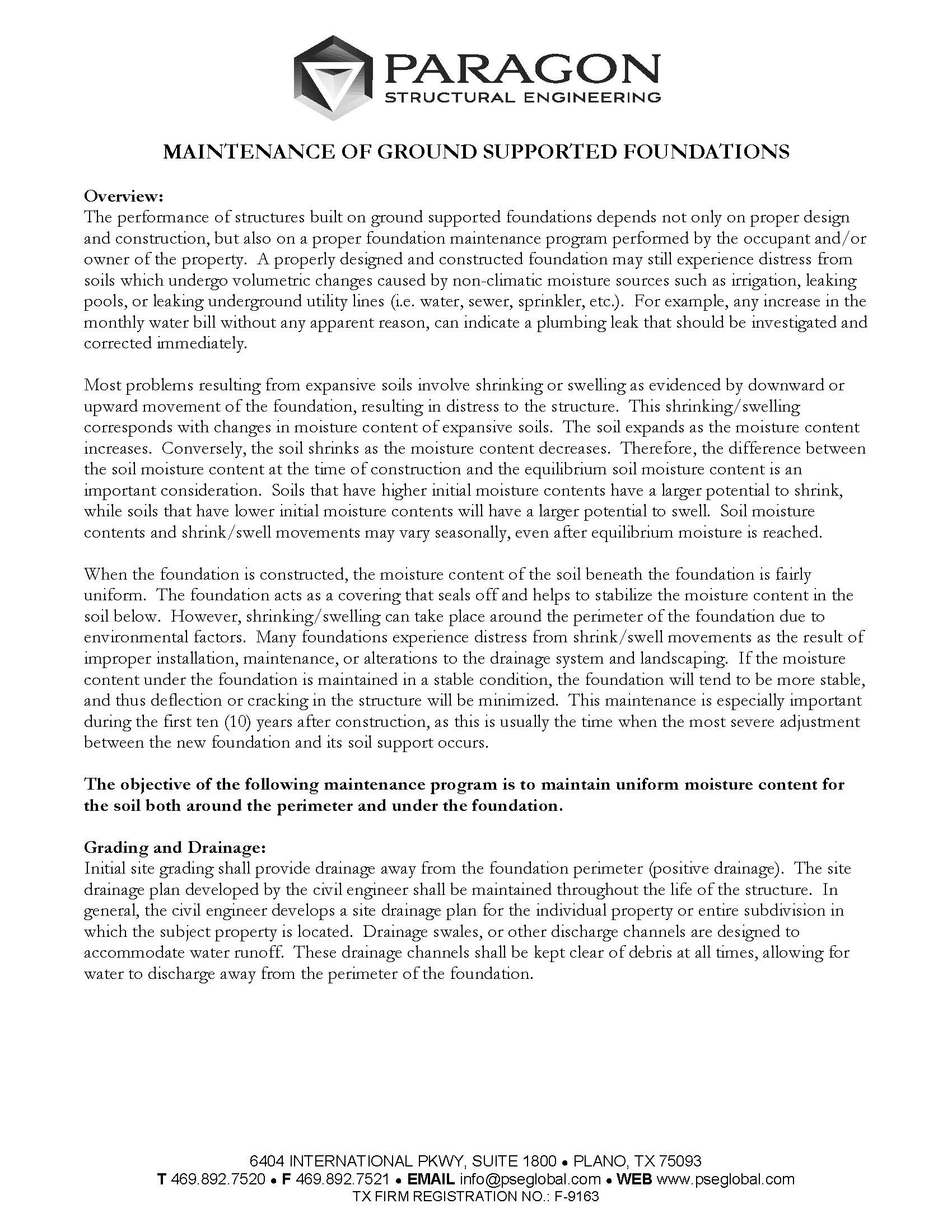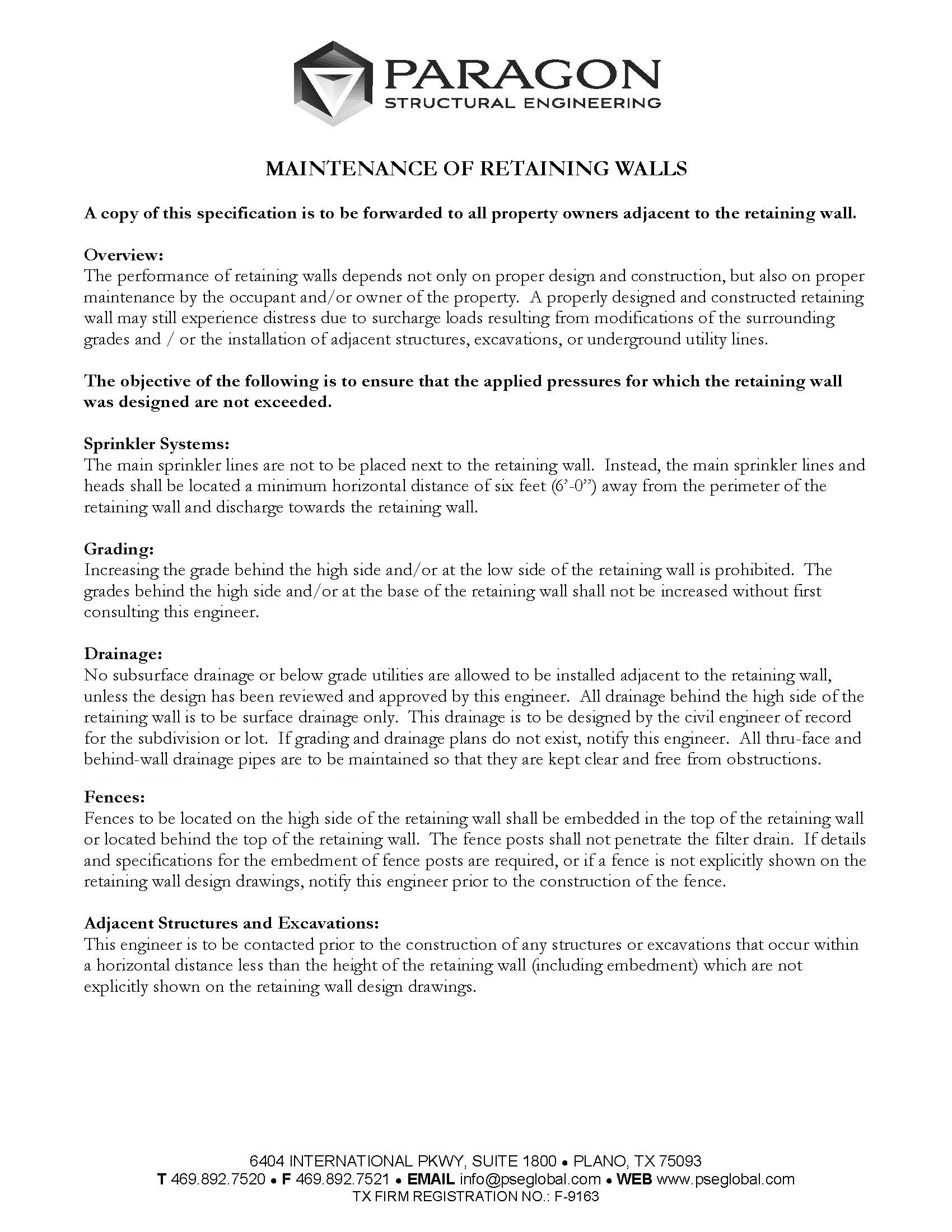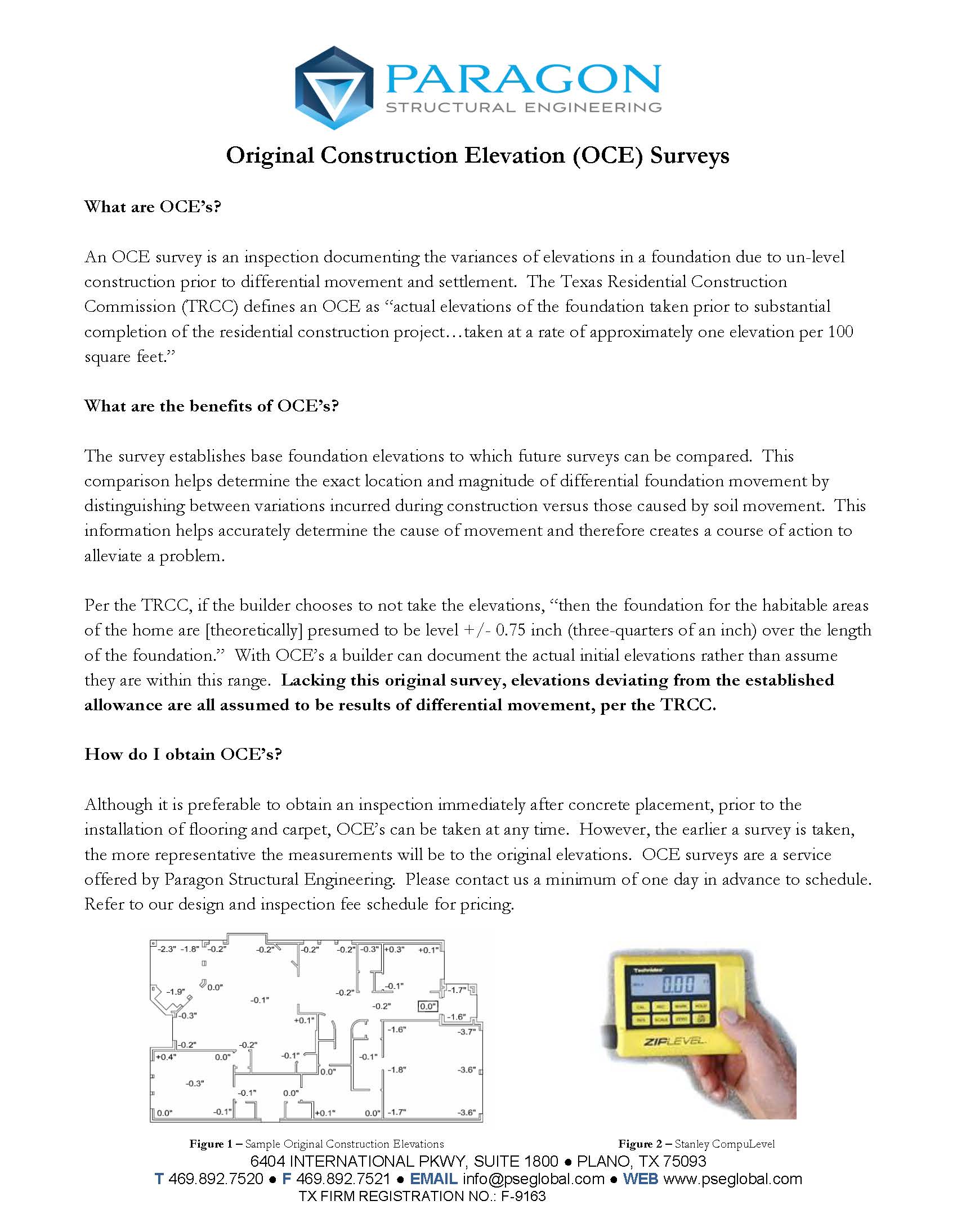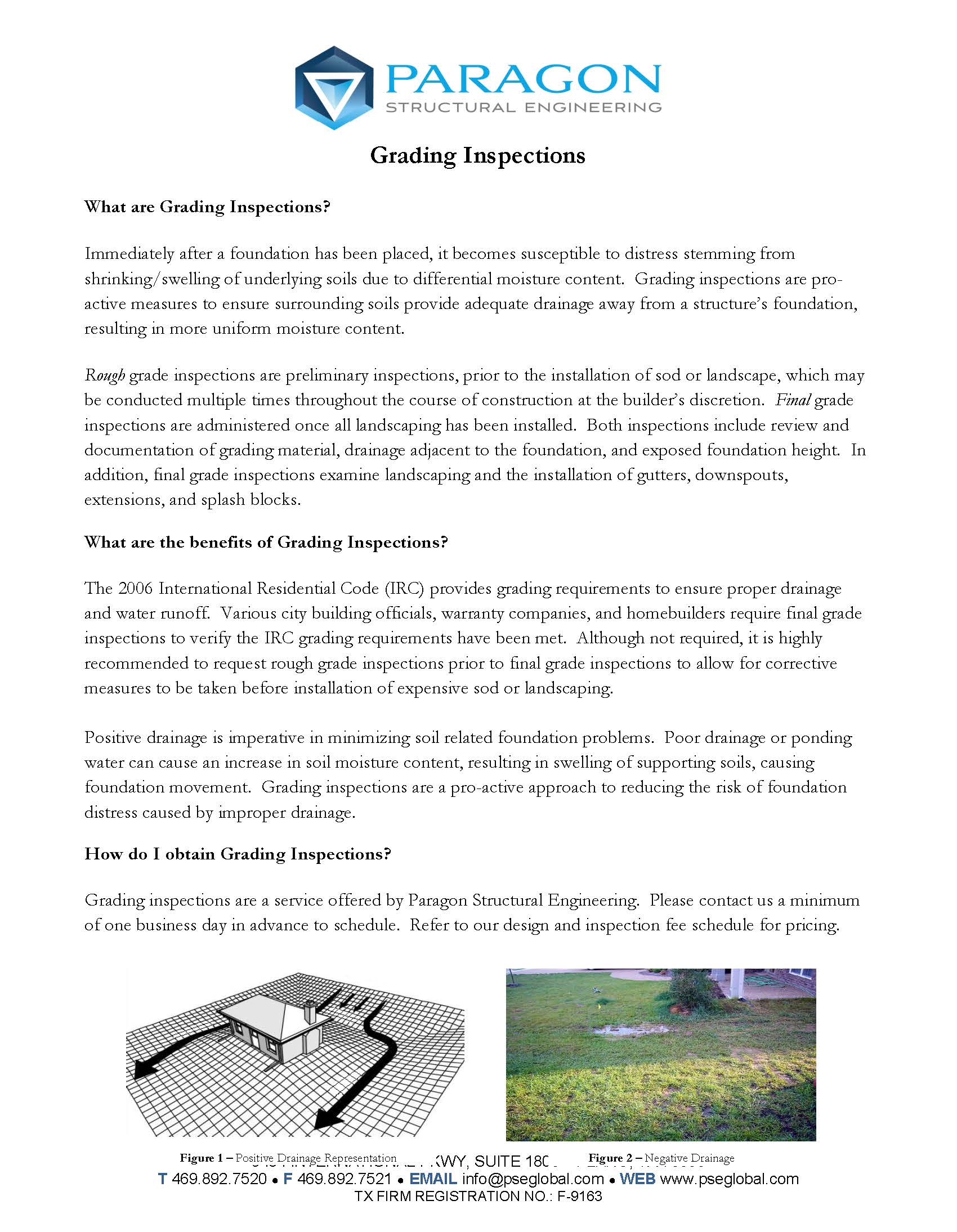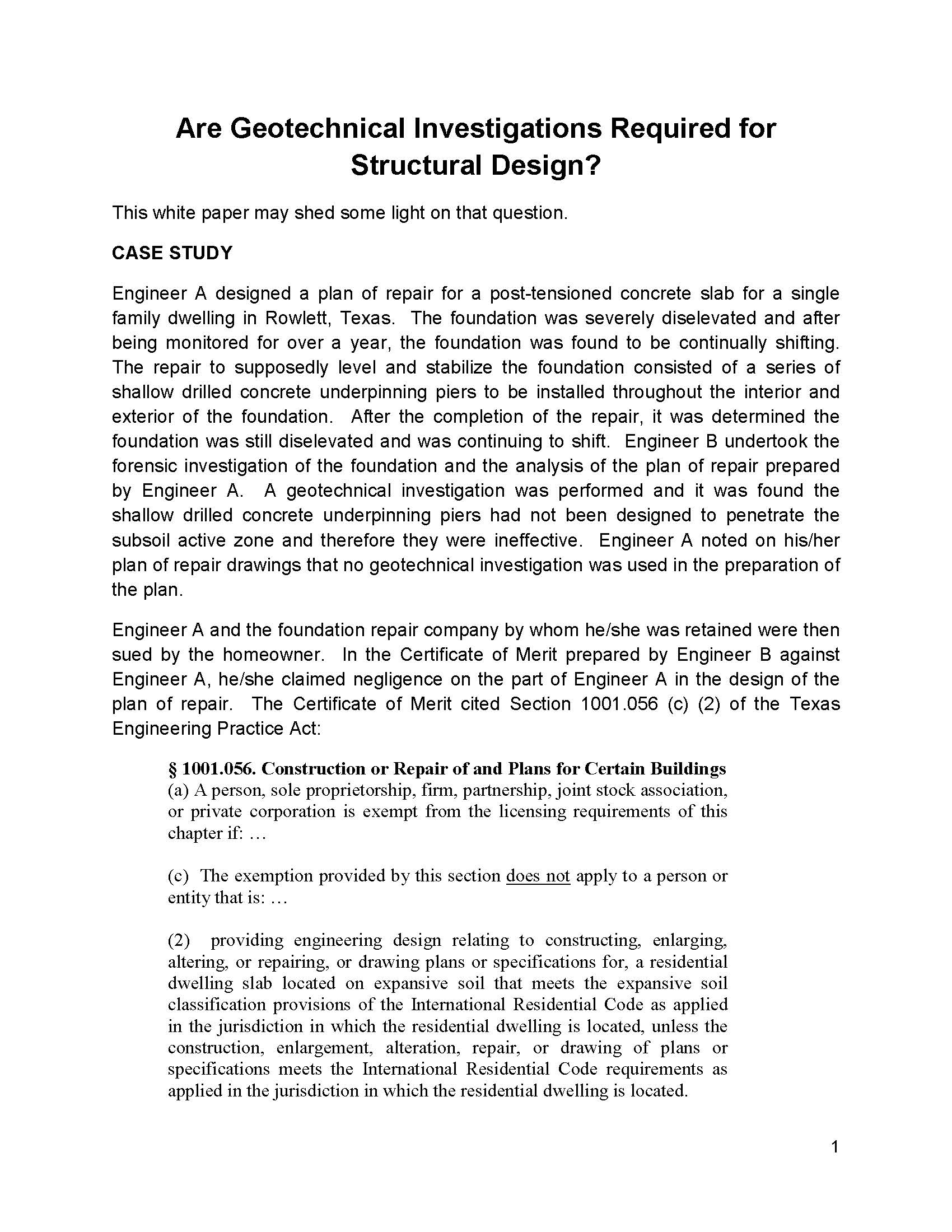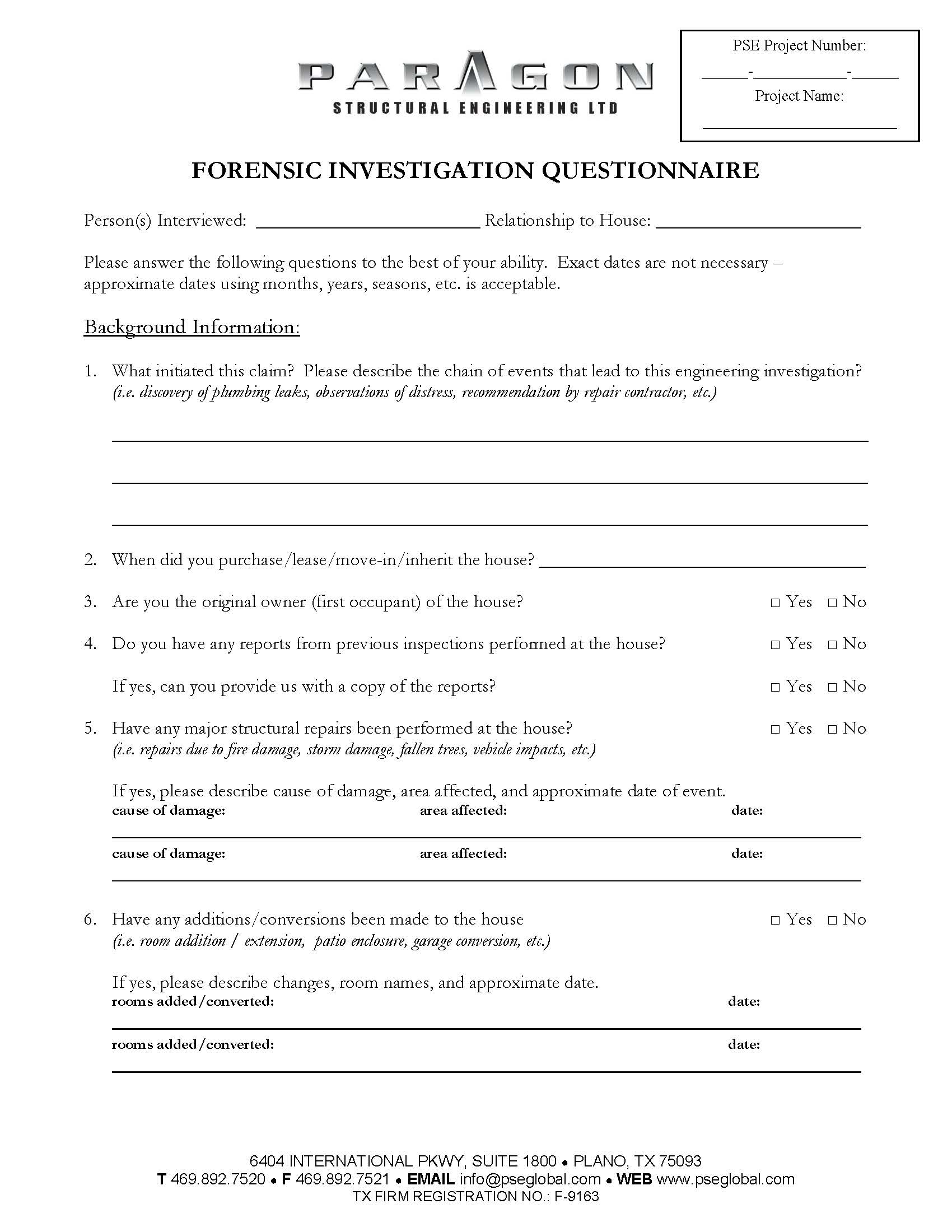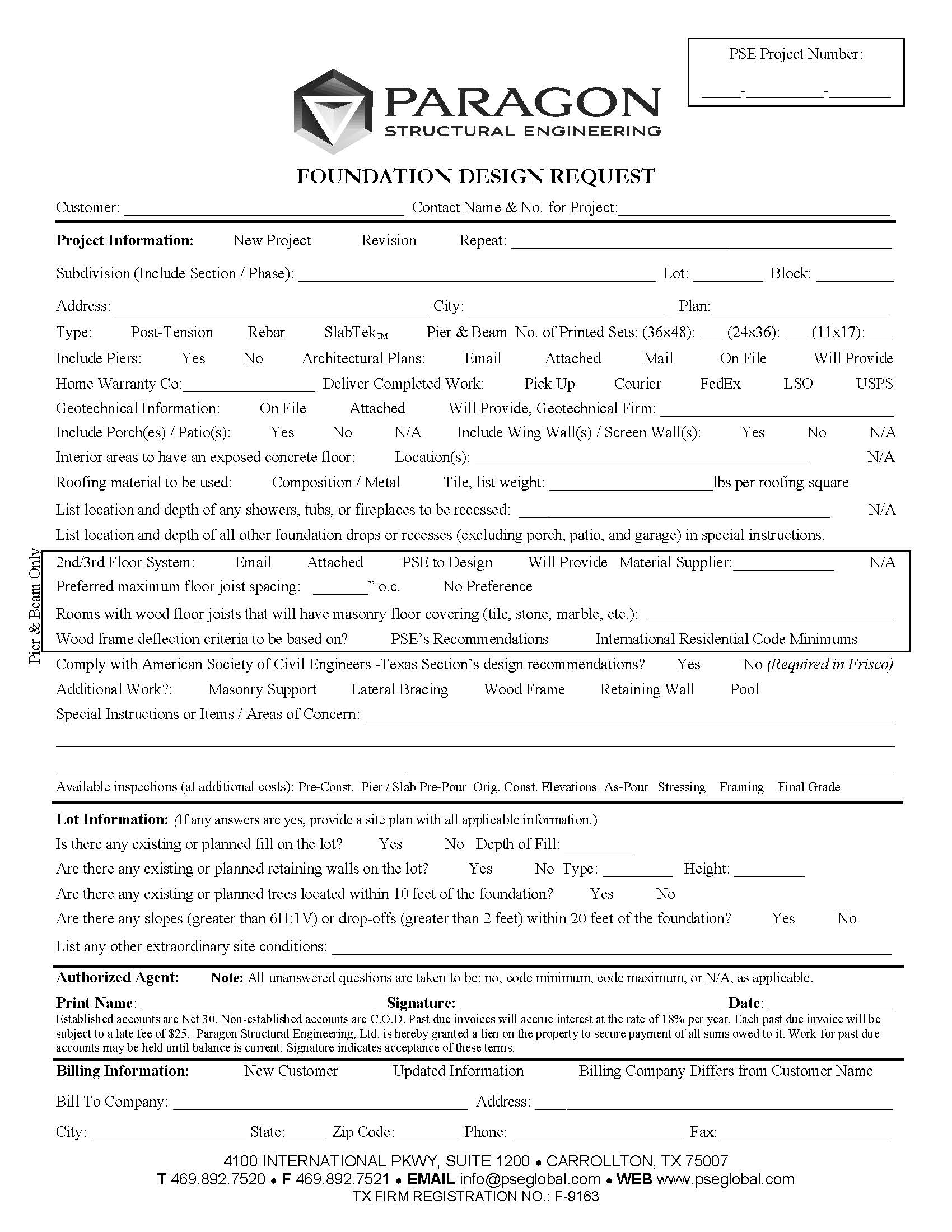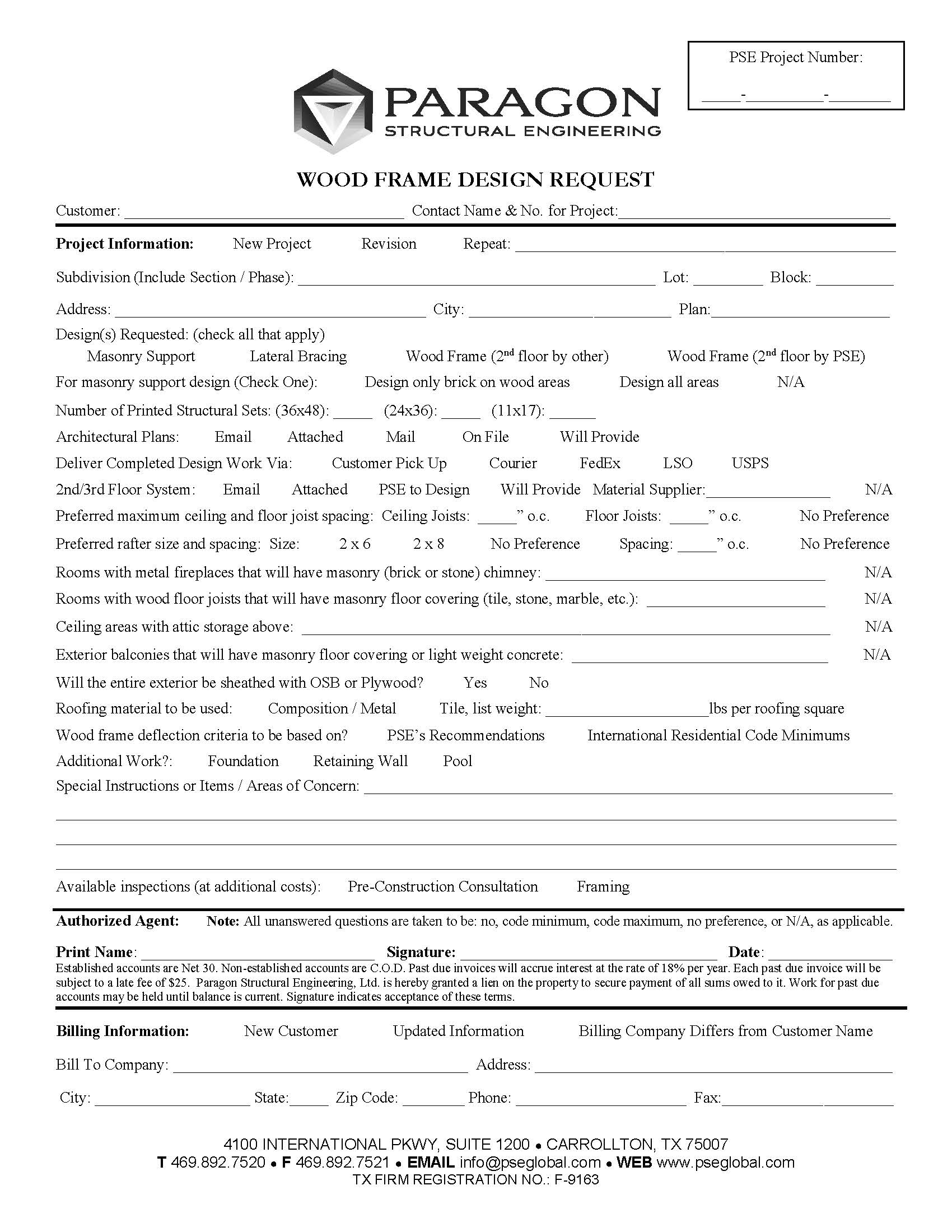CASE STUDY 1
CASE STUDY 2
CASE STUDY 3
CASE STUDY 4
CASE STUDY 5
PUBLICATIONS AND REFERENCES
GROUND SUPPORTED FOUNDATION MAINTENANCE
This document provides recommended practices for grading/drainage, landscaping, watering, trees, and gutter/downspout systems in proximity to a ground-supported foundation. A copy of this document is provided with all PSE’s foundation designs, and it should be forwarded to all future owners of the structure.
RETAINING WALL MAINTENANCE
This document provides recommended practices for grading/drainage, watering, fences, adjacent structures, and excavations in proximity to a retaining wall. A copy of this document is provided with all PSE’s retaining wall designs, and it should be forwarded to all future property owners adjacent to the retaining wall.
WHEN ARE GEOTECHNICAL REPORTS REQUIRED
This document is published by the National Council of Structural Engineers Associations. The white paper explains that the International Building Code does not allow a geotechnical investigation to be waived if evidence of expansive soil exists for an adjacent area.
ARE GEOTECHNICAL INVESTIGATIONS REQUIRED FOR STRUCTURAL DESIGN?
This document is a case study that outlines the requirements for Geotechnical Investigations with respect to the design of remedial foundation repairs. The study concludes that both the Texas Engineering Practice Act and the International Residential Code require Geotechnical Investigations for such remedial designs.


